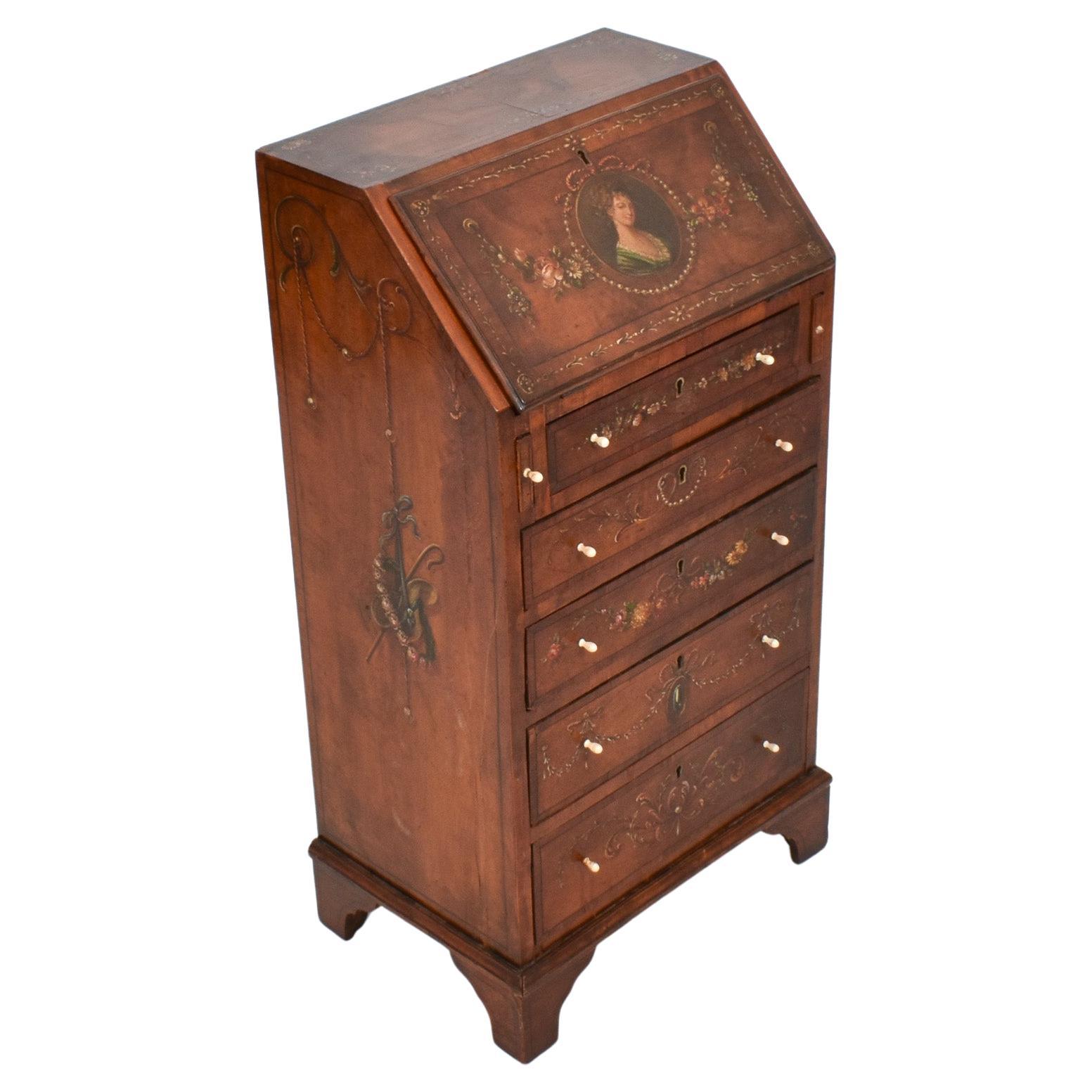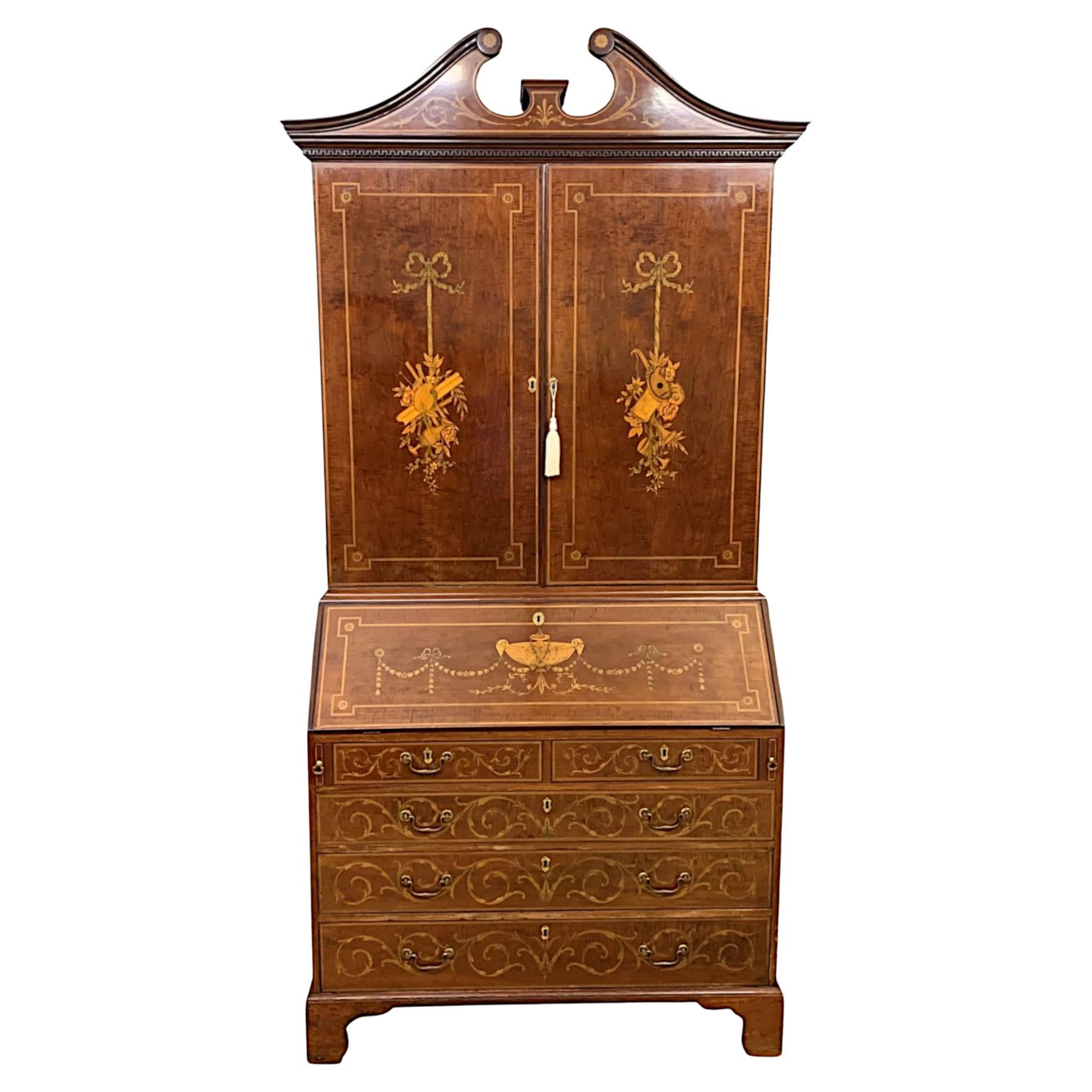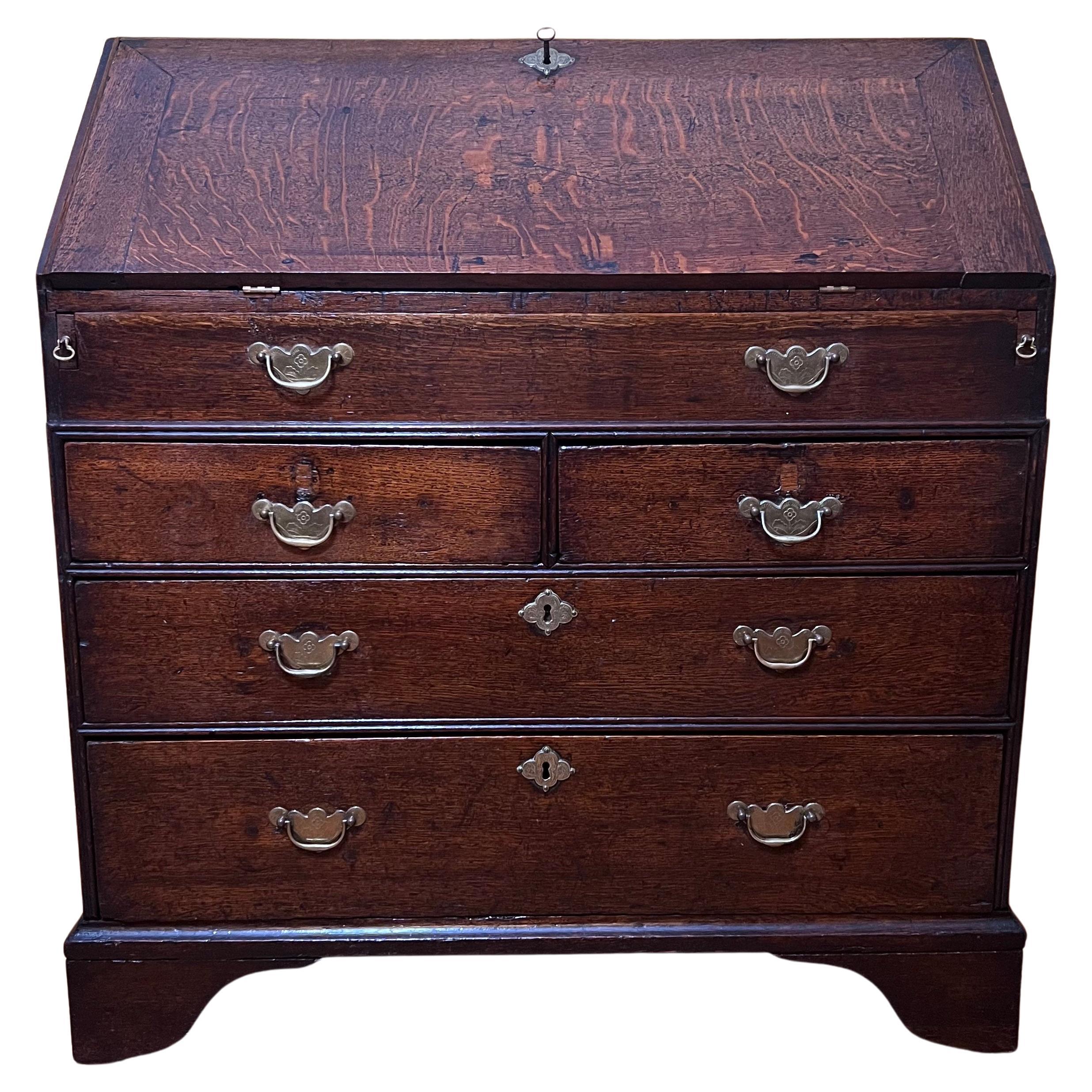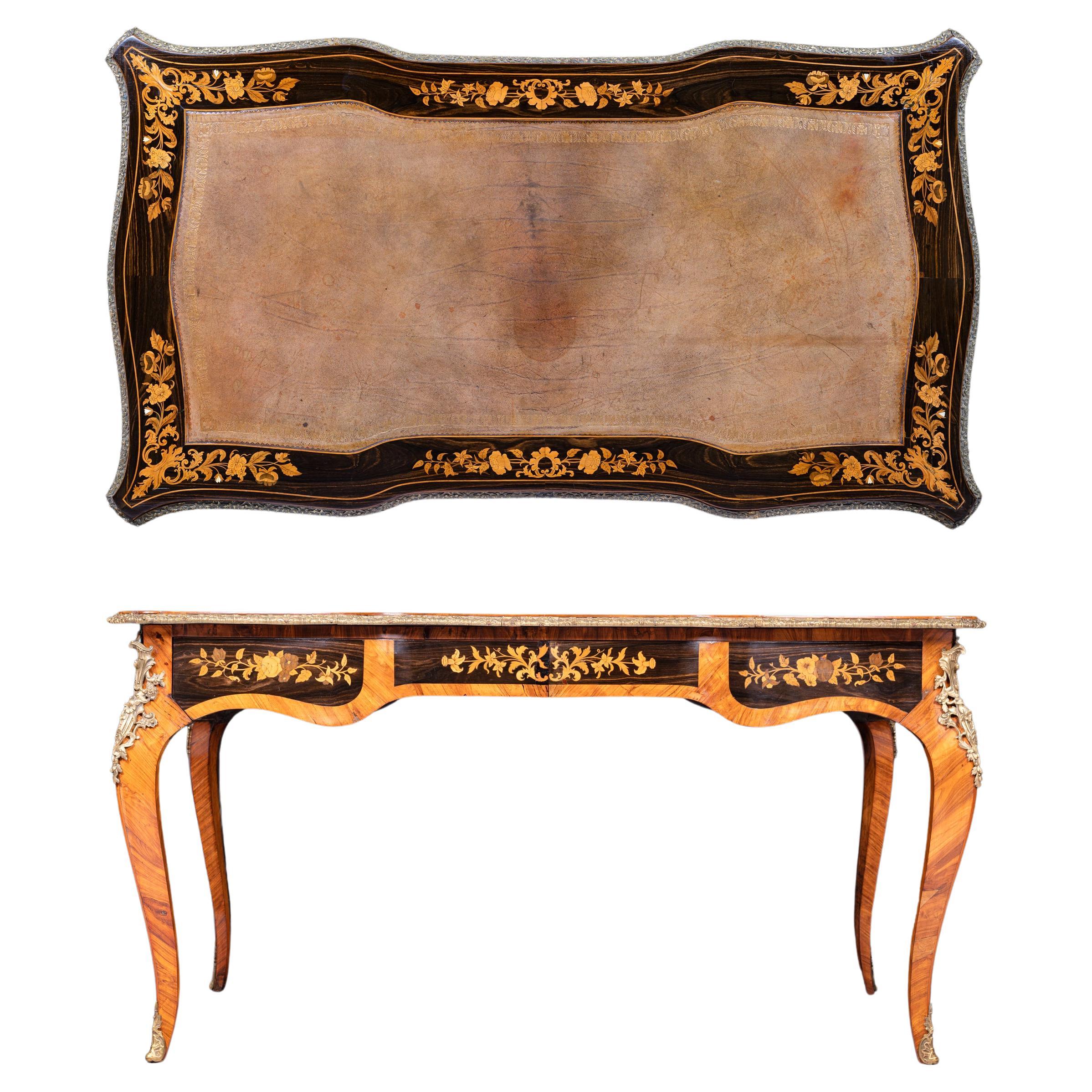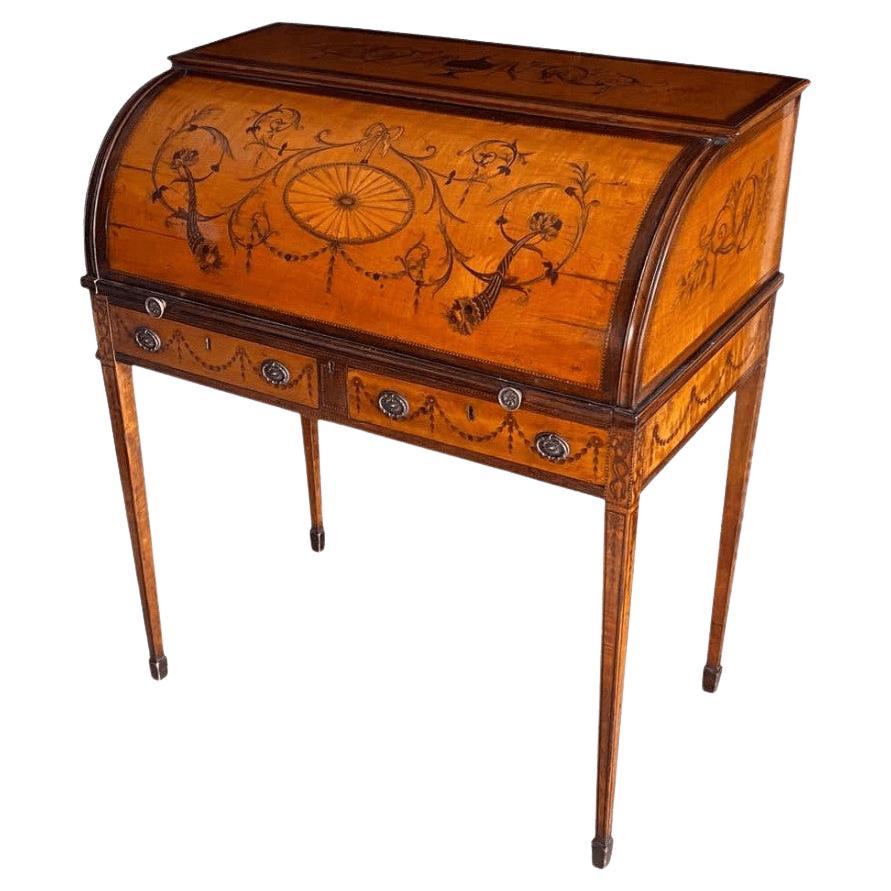Items Similar to Exceptional Rare and Fine Padouk Wood Bureau in the Chippendale Manner, c. 1780
Want more images or videos?
Request additional images or videos from the seller
1 of 14
Exceptional Rare and Fine Padouk Wood Bureau in the Chippendale Manner, c. 1780
About the Item
In superb original condition, with a fantastic colour, and retaining the original fine quality brass hardware. This is a very high quality solid Padouk bureau and an extremely rare piece of British Colonial and Canton period furniture dating from around 1780.
This is an incredible piece of artistry and skill, very pure in the making, and it remains in excellent and largely original condition.
What strikes you is not only the extraordinary quality of the cabinet work and hardware but that it contains an usually high number of secret drawers and hidden compartments.
In addition to the interior concealed drawers flanking the architectural door with teak parquetry, the whole central section pulls out and there is a concealed compartment behind this and drawers in the aprons above the pigeon holes. But this bureau also has four shallow sliding drawers set into the reverse of two of the dust boards between the main long drawers and a false base board above the bottom boards/below the lowest principal drawer.
There is a lining of blue paper on the shallow dust board hidden drawers.
I think all of the main drawers once had similar false bottoms raised just a half inch above the base boards of each. These sadly appear very recently lost as the bottom boards are in pristine and clean condition and there is a slim band of the blue paper stuck along the back of each drawer lining – which may have acted as a sort of hinge.
Despite its small size the bureau is the heaviest I have ever encountered and far heavier than if made of any other hardwood.
The lock to the fall has been broken out and changed at some point early in its life - which given the timber and hardware must have taken quite some effort!
The plinth is beautifully carved with a Chinese scroll.
Even the drawer linings are solid Padouk with a beautiful colour and swirling grain.
It would have been made bespoke for someone who needed these secret places and the false bottom board certainly would have allowed a lot of bank notes or important documents to be successfully hidden.
A Padouk bureau bookcase at Christies sold for £16,800 and on line you will find 18th Century Anglo Indian Padouk pieces selling for upwards of £30,000.
Dimensions are:
36 inches wide, 41 inches high, 22 inches deep
(dimensions measured at feet are 37.5 inches wide and 23 max deep)
For metric please multiply by 2.5
- Dimensions:Height: 41 in (104.14 cm)Width: 36 in (91.44 cm)Depth: 22 in (55.88 cm)
- Style:Chippendale (In the Style Of)
- Materials and Techniques:
- Period:
- Date of Manufacture:circa 1780
- Condition:Repaired: The lock to the fall has been broken out and changed at some point early in its life. Wear consistent with age and use.
- Seller Location:Heathfield, GB
- Reference Number:1stDibs: LU7564230989962
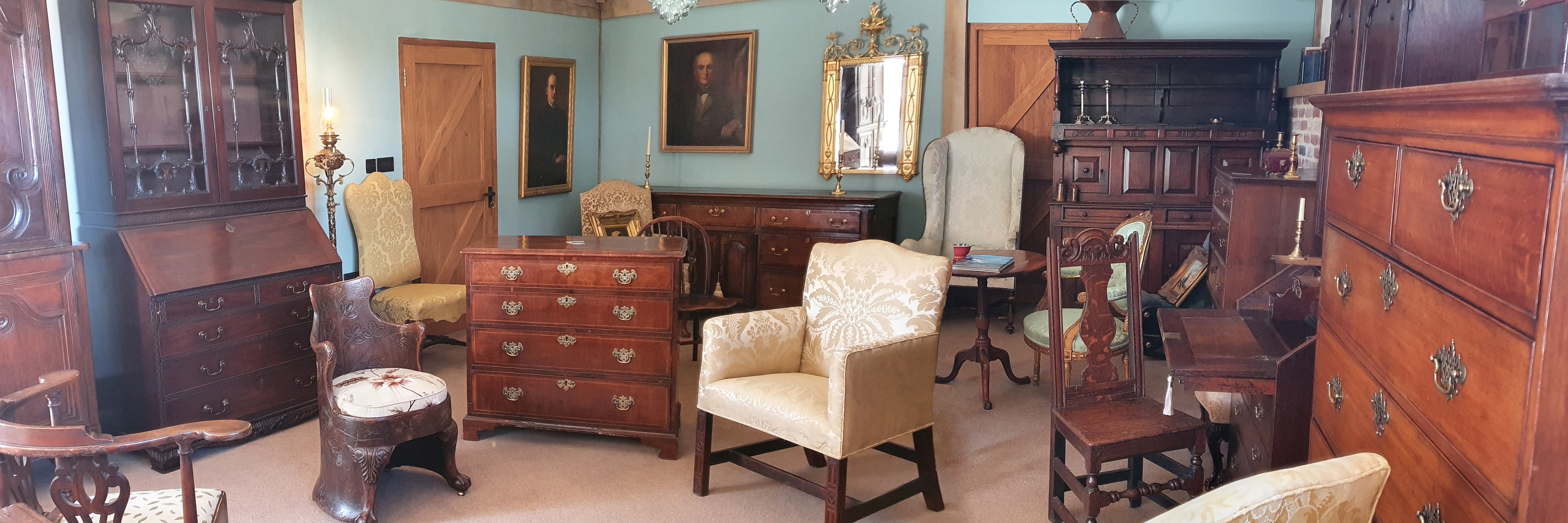
About the Seller
5.0
Gold Seller
These expertly vetted sellers are highly rated and consistently exceed customer expectations.
Established in 1980
1stDibs seller since 2022
12 sales on 1stDibs
Typical response time: <1 hour
- ShippingRetrieving quote...Ships From: Heathfield, United Kingdom
- Return PolicyA return for this item may be initiated within 7 days of delivery.
More From This SellerView All
- Fine Georgian Giltwood Arm Chair in the Manner of Thomas ChippendaleLocated in Heathfield, GBNewly upholstered in a spring green pure silk from the Gainsborough Silk Weaving Company (thickly woven from an original 18th century fabric pattern) and with double piped and button...Category
Antique 18th Century Armchairs
MaterialsGiltwood
- Exceptional George II Yew Wood and Walnut Bureau c. 1750Located in Heathfield, GBWith a fantastic colour, and in rarely seen Yew wood, this beautiful bureau dates from the reign of George II c. 1750. With oak lined drawers and a handsome interior of small walnut...Category
Antique Mid-18th Century Commodes and Chests of Drawers
MaterialsWalnut, Yew
- Exceptionally Fine And Rare James I Oak Wainscot Chair Dated 1609Located in Heathfield, GBAn extremely rare and exquisitely carved English oak wainscot chair dated 1609 and with two figural masks – the central mask possibly the ‘Green Man’ with foliage scrolling and falli...Category
Antique 17th Century Chairs
MaterialsOak
- Rare And Exceptional George I Oak And Laburnum Chest On Stand C. 1720Located in Heathfield, GBAn extremely fine quality and original early George I chest on stand. Principally of a rich oak flecked with pale medullary rays and with rare and beautiful laburnum crossbanding to...Category
Antique Early 18th Century Commodes and Chests of Drawers
MaterialsOak
- Exceptional William And Mary Yew Wood Oyster Mirror C. 1690Located in Heathfield, GBA very rare and exceptionally beautiful William and Mary cushion mirror with yew wood oyster veneers and retaining its original shaped ...Category
Antique 1690s William and Mary Wall Mirrors
MaterialsYew
- Very Good Wing Back Chair in the Queen Anne Manner c. 1890Located in Heathfield, GBA superb quality, wonderfully comfortable and very substantial Victorian wingback armchair with substantial cabriole legs – well carved with scallop shells to the knees and scrolled ...Category
Antique Late 19th Century Armchairs
MaterialsWalnut
You May Also Like
- Childs Exceptionally Rare Satinwood Bureau Desk circa 1770Located in Lincoln, GBThis small satinwood bureau desk circa 1770 is only 75cm tall, making it a very unique piece. It is of the George II / III period with beautifully ori...Category
Antique 18th Century British George II Desks
MaterialsSatinwood
- Very Rare and Fine Early 19th Century Georgian Inlaid Bureau BookcaseLocated in Dublin, IEA very rare and fine early 19th century Georgian mahogany bureau bookcase, line inlaid throughout and with intricate marquetry depicting Neoclassical motifs of swags, garlands, flowe...Category
Antique Early 19th Century English Georgian Bookcases
MaterialsBrass
- Antique 1780s George III English Oak BureauLocated in EDENSOR PARK, NSWDrop down front with 5 small drawers and 9 pigeon holes in desk bureau, 4 larger drawers comes with original key. Circa: 1780s Material: Oak Country Of Origin: England M...Category
Antique 18th Century Desks
MaterialsOak
- 19th Century English Bureau Plat in the Manner of Edward Holmes BaldockBy Edward Holmes BaldockLocated in Dublin, IEA fine 19th century Louis XV style Walnut, Ebony and floral marquetry Bureau Plat in the manner of Edward Holmes Baldock, the serpentine shaped top inset with a panel of tooled leather within a border of scroll work and floral trails, the corners with shell and cabochon and foliate clasp mounts, above two frieze drawers decorated with floral marquetry and similar opposing dummy drawers, on cabriole legs applied with scrolling foliate and rocaille mounts trailing to sabots. Footnotes: Edward Holmes Baldock (1777-1845) is documented in London Trade Directories of the period in various capacities but first appears listed at 7 Hanway Street, London in 1805 described as a '..dealer in china and glass'. But by 1826 the various facets of the business included '..buying and selling, exchanging and valuing china, cabinets, screens, bronzes etc'. Baldock's business seems to have largely involved trading in foreign items and between 1832-7 he was the purveyor of earthenware and glass to William IV and later purveyor of china to Queen Victoria from 1838 until his death. He is known to have repaired, re-modelled and adapted furniture...Category
Antique 19th Century English Louis XV Desks
MaterialsOrmolu
- A Rare And Early Georgian Kneehole BureauLocated in Skipton, GBA rare early Georgian Kneehole Bureau of a wonderful colour and patination. Having a well figured fall which opens to reveal three banks of oak lined dovetailed drawers, all above a ...Category
Antique 18th Century English Georgian Desks
MaterialsMahogany, Oak
- Fine Chippendale Period Satinwood and Marquetry DeskLocated in Lymington, GBA fine Chippendale-period satinwood and marquetry desk. English, George III period, circa 1770. The considerable use of the best quality mahogany in the carcass is typical of the very fine work of Thomas Chippendale. It is rare today to find an 18th-century satinwood and marquetry-inlaid desk of this quality. (Most offered on the market are 19th/ 20th century). Major, period satinwood pieces have become almost unobtainable. The superbly-controlled and delicate marquetry inlays are reminiscent of the fine decoration on the famous Diana and Minerva Commode by Chippendale at Harewood House...Category
Antique 18th Century English George III Desks
MaterialsSatinwood
Recently Viewed
View AllMore Ways To Browse
Antique Furniture Dating
Wood Rare Antique Furniture
Chinese Blue Pieces
Wood Bureau
Antique Timber Cabinet
Exceptionally Fine 18th Century
Antique Paper Cabinet
Rare Bank
Shallow Wood
The Secret Door
Furniture Bank In Wood
Bureau Drawers Wood
18th Century Chippendale Cabinet
Important Rare Cabinet
Bank Desk
Carved Wood Architectural Pieces
Solid Wood Antique Desk
Solid Wood Desk Antique
